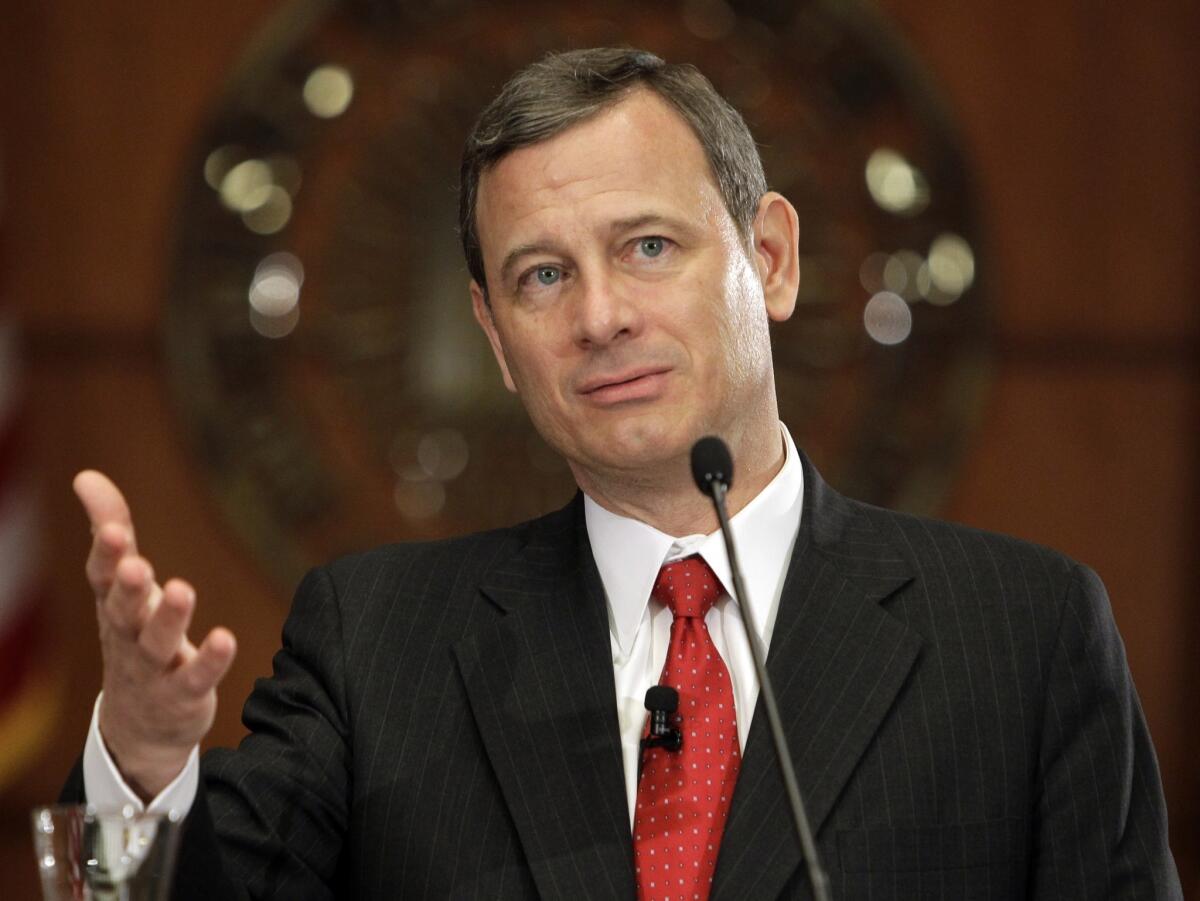Filling the federal bench

- Share via
The federal judicial bench is dangerously understaffed: 10% of district judgeships lie vacant and 8% of appellate judgeships languish unoccupied. Meanwhile, the press of federal judicial business has become so great that the Administrative Office for the United States Courts has classified about half of existing vacancies as “judicial emergencies.” In his 2010 report on the state of the federal courts, Chief Justice John G. Roberts Jr. underscored the “persistent problem” of judicial vacancies, emphasizing that judges in overburdened districts confront “acute difficulties” and shoulder “extraordinary caseloads.”
What happened to the federal bench during the first four years of the Obama presidency? Conventional wisdom suggests that President Obama preferred to place his political capital in legislative areas such as healthcare and financial reform rather than in the naming of federal judges. He started his term with 55 openings on the federal bench and now has 79.
There is no dispute that in his first term, the president will have appointed fewer lower-court judges than did Bill Clinton or George W. Bush. At this point in their administrations, Clinton and Bush had each placed 199 federal judges on the bench. Obama has appointed only 162 federal judges. The falloff is especially striking because in his first term, Bush had only 228 judicial openings to fill. Obama, by contrast, has had 239. (Clinton had the opportunity to fill 273 positions.)
A close look at the numbers, however, shows that the hazardous understaffing of federal judgeships is less attributable to Obama than to a recalcitrant Senate. The president has nominated candidates for 90% of the vacancies in the last four years. That is not out of line with Clinton and Bush, who in their first terms nominated candidates for 87% and 99% of existing vacancies, respectively. Yet the Senate has confirmed only 75% of Obama’s nominees. By contrast, the Senate confirmed 84% of Clinton’s first-term nominees and a whopping 90% of Bush’s.
If the crisis of judicial staffing is to be resolved, the Senate must take responsibility for giving the president’s judicial nominees the up-or-down vote they deserve. In the face of an ongoing stalemate threatening to cripple the third branch of government, further steps must be taken. The country appears to be in the mood for responsible leadership, not the negativity that denies presidential nominees a confirmation vote.
On the president’s side, the danger seems less the inability to nominate candidates than a wariness about pressing his perspective with sufficient vigor. In the words of former White House Counsel Gregory Craig, the early Obama administration “did not want to nominate candidates who would generate rancorous disputes over social issues that would further polarize the Senate.” Bush imposed no such limitations on his judicial nominations. He candidly advanced candidates who shared his constitutional views. If Obama does not successfully guide nominees to confirmation, he risks skewing the political complexion of the federal judiciary.
A judiciary staffed with judges predisposed against government regulation can cause incalculable damage. Of course, the president saw that lesson in action during his battle for the constitutionality of the Affordable Care Act. Despite a strong consensus in the legal community in favor of the law’s constitutionality, the innovative arguments for its unconstitutionality first gained national respectability in the peculiar opinions of two conservative district judges appointed by Republican presidents.
In myriad ways, lower federal courts can fortify or undermine legislative achievements. They can interpret statutes sympathetically or grudgingly. If Obama wishes to consolidate his record of accomplishments, he should make it a priority during his second term to fill existing vacancies on the federal bench with candidates who genuinely support his constitutional outlook.
The Court of Appeals for the District of Columbia Circuit holds particular importance. It handles a substantial share of the nation’s regulatory and national security cases. The D.C. Circuit should have 11 active judges, but it now has only eight — and by early next year, it will have only seven. The Senate has failed to confirm two of the president’s nominees, and he has not proposed candidates for the other vacancies.
During the next four years, the president and the Senate must work together to make judicial appointments a priority. Obama should continue to put forward strong nominees and to vigorously work for their confirmation. The Senate should give each of his nominees an up-or-down vote. The national interest requires that we maintain a federal judiciary strong enough to rigorously and effectively dispense justice and uphold the rule of law.
Robert C. Post is the dean of Yale Law School. Daniel Schuker is a third-year student at the law school and worked at the National Economic Council at the White House in 2009-10.
More to Read
A cure for the common opinion
Get thought-provoking perspectives with our weekly newsletter.
You may occasionally receive promotional content from the Los Angeles Times.






